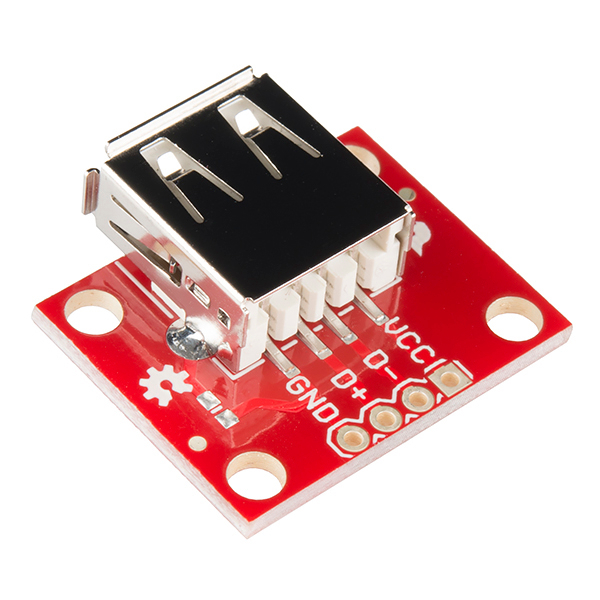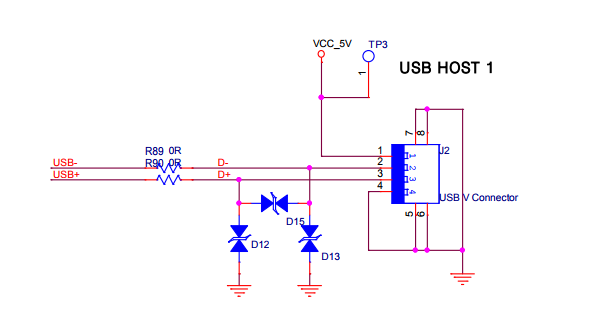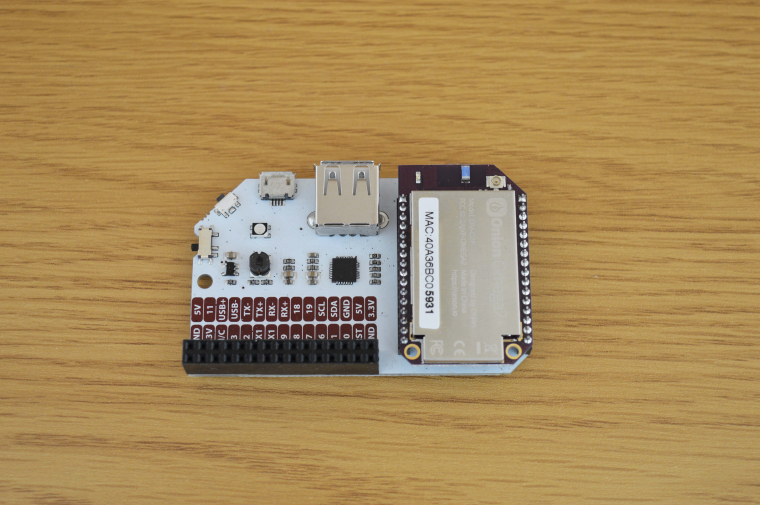WITHOUT EXPANSION DOCK...
-
I have purchased Onion Omega 2 plus recently . I dont have any EXPANSION DOCK now. I am just a student , my question is can i connect a usb flash drive using female usb connector to D+ and D- pin(USB)of Omega 2, by powering external 5v DC to USB female connector's positive pin while ground is common . any additional circuit needed for accessing USB ? help plz ..
-
@vishnu-srinivas Yes. Double check the wiring please.


-
thank you so much György Farkas..
-
@György-Farkas i was looking this schematic, https://github.com/OnionIoT/Onion-Hardware/blob/master/Schematics/Omega-Expansion-Dock.pdf . i noticed this part ....
 ..
..
D12,D13,D15 is this important ? i need to connect USB webcam , USB flash drive etc .Value of resistors (R89 0R and R90 0R) is 0 ? the why placed here ?
-
@vishnu-srinivas D12,D13,D15 are bi-directional transient voltage suppressors and are needed to block any spikes in voltage occurring from either directions. R89,R90 are 0 ohm resistors to smooth current and act as wire of sorts.
-
@vishnu-srinivas There are no TVS diodes on the pcb. Period.
Official Onion Omega2 Documentation Expansion Dock
Please correct me if I'm wrong.

The series 0 Ohm resistors in the D+ and D- lines allow some design flexibility if any line termination is necessary.
See also the USB specification: the line driver output impedance must match the cable impedance.
-
i would be very surprised that it would pass CE testing without them. they are usually there to protect from ESD entering the connector. several testing houses in the u.s.a. during testing will inject short high volt/low current spikes on connectors. i would wager that void of circuit protection it would fail. maybe onion had the components in the test units if needed for certification testing and then dropped them for various reasons from the production units. any pictures of the units that went through CE testing?
-
@Douglas-Kryder
It's just a module, not a finished product.
-
back in the day when socket cpu were popular some carrier board manufacturers said the same thing, that without cpu their product was not covered by testing regulations. fine, said fcc, but if anything adverse does happen you are 100% responsible. this led to many of the board manufacturers to have their products tested with intended cpu installed. so, fine, sell the modules without testing the intended use, i.e. with omega2 installed. but if it gets to market and that little power regulator causes fires, then guess who is on hook? same should be with unprotected usb causing microprocessor damage. particularly since the protection was in the schematics. that is way i see it. does that mean any particular liability exists. that is for regulators and lawyers to decide.